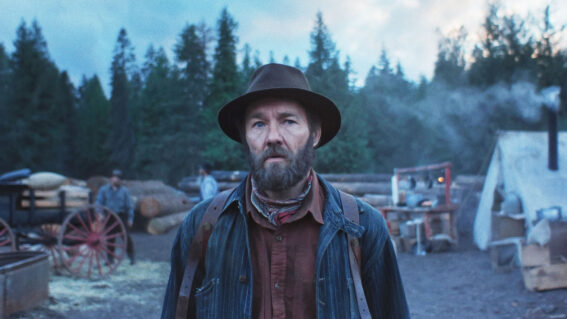American Nightmare and the game-playing of true crime documentaries
Even this very article is complicit in manipulating the shocking true story of Denise Huskins’ disappearance.

True crime docuseries American Nightmare packs plenty of cliffhangers and misdirects into three episodes. Luke Buckmaster reckons it’s most interesting as a “reminder that any kind of history is packaged and sorted”—warped and retold before our eyes.
The greatest mystery in Netflix’s latest sucking of the true crime teat isn’t what happened in the case it unpacks: the 2015 disappearance of Denise Huskins who, as her boyfriend at the time explains, was taken during the night while he was tied to a chair and sedated. It’s what the filmmakers are hiding from us. You can sense, early into American Nightmare, that acts of subterfuge are taking place in the telling of this story, which begins with grainy footage of two lovers on a beach: Huskins and her aforementioned beau, Aaron Quinn. Soon we hear audio from a 911 call made by Quinn, then actual footage of him being interoggated—zhushed up with jumpy violin strings.
Writer/directors Bernadette Higgins and Felicity Morris stress the strangeness of this scenario, peculiar criminal goings-on of course being catnip for true crime documentarians. They introduce crime reporter Henry Lee, who calls the case “completely bizarre,” referring to the abduction taking place in a nice middle-class community. They wheel out Quinn’s attorney, Dan Russo, who gives good sound bite, noting that over his career he’s seen “some crazy bullshit” but had “never heard anything like this.” Another lawyer chimes in, describing it as “absolutely incredible.”
Higgins and Morris are clearly keen as mustard to frame this as a “stranger than fiction” narrative. It’s also clear they’re concealing something, possibly many things. That feeling gives outer-textual shades to the mystery, beckoning us to contemplate the tactics of the filmmakers by pondering certain questions—particularly as the context-establishing first episode unfolds. Is Huskins, for instance, alive or dead? If the former, why is she not in front of the camera? Could she be alive but not wishing to participate? Could she be introduced later?
Anything’s possible. For a fine example of “not actually dead!” narrative trickery, consult the great 2012 documentary Searching for Sugarman, which begins with interviewees speculating about various different ways the subject, musician Sixto Rodriguez, might’ve died. Did he, as legend suggests, suicide on stage by immolating or shooting himself? In a deliciously great twist, director Malik Bendjelloul tracks down the man, finding him alive and well, but chooses to infer otherwise in the name of interesting storytelling. Those (like me) who entered American Nightmare not knowing the details of the case will hope something similar might occur, while we also contemplate the chilling possibility that Huskins is dead.

This article gets a bit meta-textual if you consider the following: even writing about the show entails some game-playing. Take the above paragraph. I know what happened, given I’ve seen all the show’s three episodes, but I also know readers can burn effigies of critics who divulge spoilers. Did I put more weight on the first possibility (that Huskins is alive) because it’s the truth, or because it’s a decoy, or because I thought of Searching for Sugarman and wanted to broaden out the discussion? Everything is storytelling, even critiquing.
The last shot of American Nightmare‘s first episode is a real humdinger, screaming “better stick around for the next one!” The second episode isn’t as interesting, but it too ends with a cliffhanger, an ellipsis, a dot dot dot, a keep watching, a “what next?”
None of this will come as a surprise, given how refined the Netflix true crime format has become. But it’s an interesting reminder that any kind of history is packaged and sorted. The past is always viewed through the prism of the present, and that prism refracts many surfaces: the mores of the times, the technologies of the time, the grammar and syntaxes developed for them. The truth—always elusive, and sometimes unattainable—is that spectrum of colours passing through it.























